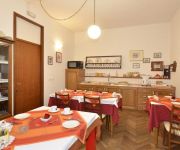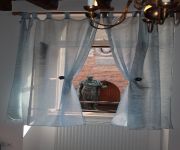Facts and Data
Webpages:
Official Unesco Page
Basis Data:
Unesco World heritage since: 2011
Size of heritage: 14 ha
- Buffer zone: 306 ha
Coordinates:
Longitude: 13,433°
Latitude: 46,094°
Summary
The Longobards in Italy, Places of Power, 568 - 774 A.D. comprises seven groups of important buildings (including fortresses, churches, and monasteries) throughout the Italian Peninsula. They testify to the high achievement of the Lombards, who migrated from northern Europe and developed their own specific culture in Italy where they ruled over vast territories in the 6th to 8th centuries. The Lombards synthesis of architectural styles marked the transition from Antiquity to the European Middle Ages, drawing on the heritage of Ancient Rome, Christian spirituality, Byzantine influence and Germanic northern Europe. The serial property testifies to the Lombards' major role in the spiritual and cultural development of Medieval European Christianity, notably by bolstering the monastic movement.
Location on Map
Show bigger map on Openstreetmap
Longobards in Italy. Places of the Power (568-774 A.D.)
The UNESCO World Heritage site "Longobards in Italy. Places of the Power (568-774 A.D.)" is a collection of seven locations in Italy that played a significant role in the history of the Lombard Kingdom. These sites include the fortresses, churches, and monasteries that were built during the Lombard rule in Italy from 568 to 774 A.D.
History
The Lombards, a Germanic people, invaded Italy in the late 6th century and established their kingdom, which lasted for over two centuries. During this time, they left a lasting architectural and artistic legacy that is still visible today. The Lombards were known for their unique fusion of Germanic, Byzantine, and Roman influences in their art and architecture.
One of the most significant sites within the UNESCO World Heritage site is the Monastery of San Salvatore in Brescia. Founded by King Desiderius in the 8th century, this monastery is a prime example of Lombard architecture. It features a basilica with a square plan and a bell tower, showcasing the Lombard's distinctive use of geometric shapes and decorative elements.
Another notable location is the Church of Santa Sofia in Benevento. Built in the 8th century, this church is an exceptional example of Lombard religious architecture. It features a central plan with a circular shape, reminiscent of Byzantine churches, and is adorned with intricate stucco decorations and frescoes.
Current State
The UNESCO World Heritage site "Longobards in Italy. Places of the Power (568-774 A.D.)" is well-preserved and offers visitors a glimpse into the rich history of the Lombard Kingdom. The sites have undergone extensive restoration and conservation efforts to ensure their longevity and accessibility.
Visitors to these sites can explore the unique architectural features and artistic details that characterize Lombard art. The Lombards' fusion of different cultural influences is evident in the intricate stucco decorations, frescoes, and geometric patterns found in the churches and monasteries.
Additionally, the sites provide insights into the Lombards' political and religious power during their rule in Italy. The fortresses, such as the Castelseprio Archaeological Park, offer a glimpse into the military strategies employed by the Lombards to defend their territories.
The UNESCO World Heritage site "Longobards in Italy. Places of the Power (568-774 A.D.)" serves as a testament to the cultural and historical significance of the Lombard Kingdom. It allows visitors to appreciate the unique architectural and artistic achievements of the Lombards and gain a deeper understanding of their influence on Italian history.
Overall, the UNESCO World Heritage site "Longobards in Italy. Places of the Power (568-774 A.D.)" is a must-visit for history enthusiasts and those interested in exploring the diverse cultural heritage of Italy.
Hotels and places to stay
Scacciapensieri Agriturismo
B&B Dai Toscans
Domus Iulii
Videos from the area
Videos provided by Youtube are under the copyright of their owners.













